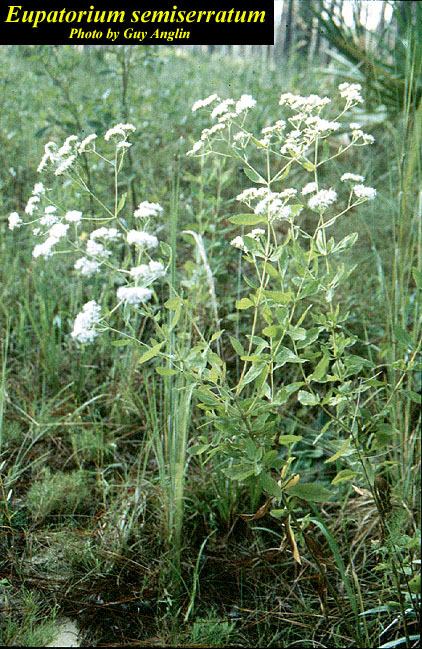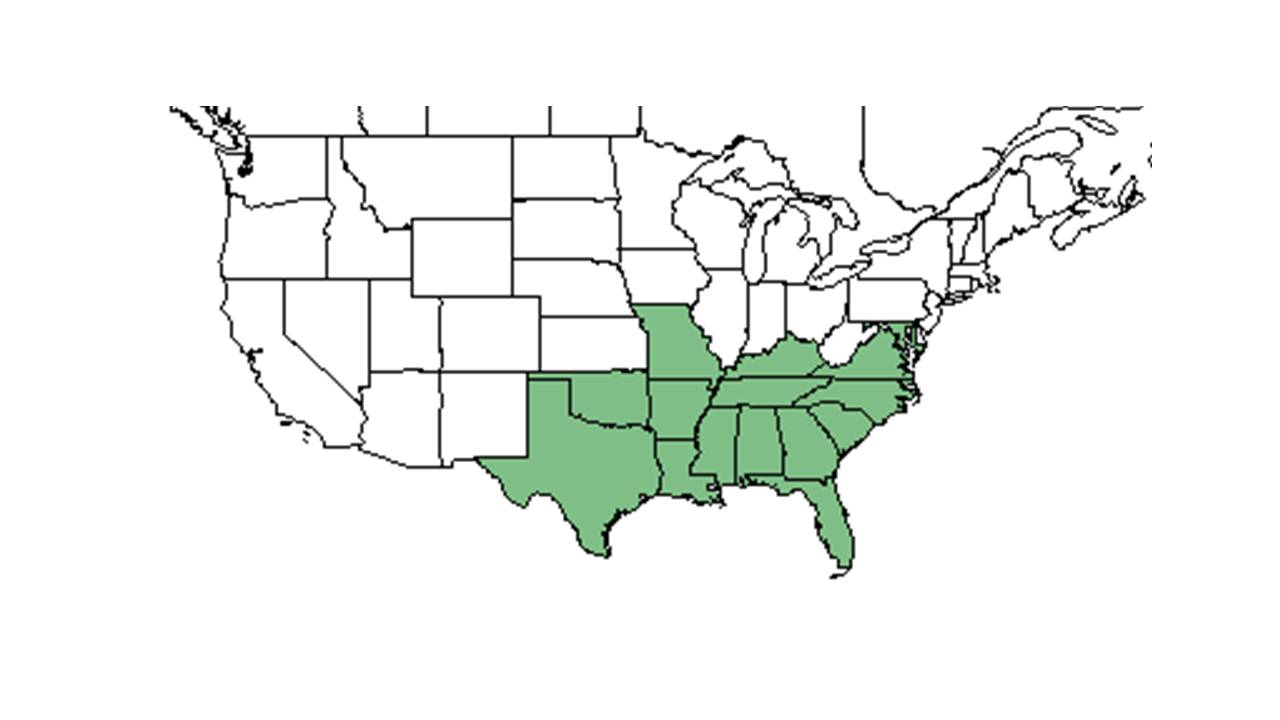Difference between revisions of "Eupatorium semiserratum"
(→Conservation and management) |
|||
| Line 37: | Line 37: | ||
===Phenology=== <!--Timing off flowering, fruiting, seed dispersal, and environmental triggers. Cite PanFlora website if appropriate: http://www.gilnelson.com/PanFlora/ --> | ===Phenology=== <!--Timing off flowering, fruiting, seed dispersal, and environmental triggers. Cite PanFlora website if appropriate: http://www.gilnelson.com/PanFlora/ --> | ||
| − | This species generally flowers from late July until October.<ref name= "Weakley"/> It has been observed flowering from August to October.<ref name=fsu/> | + | This species generally flowers from late July until October.<ref name= "Weakley"/> It has been observed flowering from August to October.<ref name=fsu/><ref>Nelson, G. PanFlora: Plant data for the eastern United States with emphasis on the Southeastern Coastal Plains, Florida, and the Florida Panhandle. www.gilnelson.com/PanFlora/ Accessed: 10 MAY 2019</ref> |
<!--===Seed dispersal===--> | <!--===Seed dispersal===--> | ||
<!--===Seed bank and germination===--> | <!--===Seed bank and germination===--> | ||
Revision as of 20:03, 10 May 2019
| Eupatorium semiserratum | |
|---|---|

| |
| Photo by Guy Anglin, Atlas of Florida Vascular Plants | |
| Scientific classification | |
| Kingdom: | Plantae |
| Division: | Magnoliophyta - Flowering plants |
| Class: | Magnoliopsida – Dicotyledons |
| Order: | Asterales |
| Family: | Asteraceae ⁄ Compositae |
| Genus: | Eupatorium |
| Species: | E. semiserratum |
| Binomial name | |
| Eupatorium semiserratum DC. | |

| |
| Natural range of Eupatorium semiserratum from USDA NRCS Plants Database. | |
Common name: Smallflower thoroughwort
Contents
Taxonomic notes
Synonym: Eupatorium cuneifolium var. semiserratum (A.P. de Candolle) Fernald & Griscom
Description
A description of Eupatorium semiserratum is provided in The Flora of North America. Unlike other similar species, it often has 3 leaves per node that are whorled.[1]
Distribution
This species is distributed from southeast Virginia south to northeast Florida and the panhandle, west to Texas and Arkansas, and disjunct in Tennessee.[1]
Ecology
It has well-documented anticancer activities against various human cancer cell lines.[2]
Habitat
Generally, E. semiserratum can be found in savannas, swamp forests, seepage bogs, clay-based Carolina bays, and other various wetland habitats.[1] It has been observed in live oak hammocks, between floodplain swamps and powerline corridors, in depressions in flatwoods, longleaf pine-wiregrass savannas, pine flatwoods, scrub oak, banks of rivers, edges of cypress depressions, and in wet drainages on open wooded slopes. It is also found in human disturbed habitats such as roadside ditches and depressions, powerline corridors, and in areas that have been clear cut and plowed.[3]
Associated species include Pinus taeda, P. palutris, P. elliottii, Serenoa repens, Taxodium distichum, Liquidambar styraciflua, Eupatorium pilosum, E. semiserratum, E. recurvans, E. leucolepis, E. cuneifolium, E. mohrii, E. scabridum.[3]
Phenology
This species generally flowers from late July until October.[1] It has been observed flowering from August to October.[3][4]
Conservation and management
It is listed as endangered by the Kentucky State Nature Preserves Commission.[5]
Cultivation and restoration
Photo Gallery
References and notes
- ↑ 1.0 1.1 1.2 1.3 Weakley, A. S. (2015). Flora of the Southern and Mid-Atlantic States. Chapel Hill, NC, University of North Carolina Herbarium.
- ↑ Kintzios, S. E. (2007). "Terrestrial plant-derived anticancer agents and plant species used in anticancer research." Critical Reviews in Plant Sciences 25: 79-113.
- ↑ 3.0 3.1 3.2 Florida State University Robert K. Godfrey Herbarium database. URL: http://herbarium.bio.fsu.edu. Last accessed: June 2014. Collectors: Robert K. Godfrey, Richard D. Houk, Loran C. Anderson, Victoria I. Sullivan, Kurt E. Blum, R. L. Lazor, R. Kral, Gary R. Knight, J. P. Gillespie, John Lazor, Paul L. Redfearn, Jr., S. C. Hood, R. A. Norris, R. F. Doren, and Annie Schmidt. States and Counties: Florida: Calhoun, Escambia, Franklin, Gadsden, Gulf, Holmes, Jackson, Jefferson, Lafayette, Leon, Liberty, Nassau, Okaloosa, Santa Rosa, Walton, and Washington. Georgia: Atkinson, Baker, and Thomas.
- ↑ Nelson, G. PanFlora: Plant data for the eastern United States with emphasis on the Southeastern Coastal Plains, Florida, and the Florida Panhandle. www.gilnelson.com/PanFlora/ Accessed: 10 MAY 2019
- ↑ USDA, NRCS. (2016). The PLANTS Database (http://plants.usda.gov, 10 May 2019). National Plant Data Team, Greensboro, NC 27401-4901 USA.